
This eerily quiet place is known as the 'suicide forest' as up to 100 bodies per year are recovered, most utilising drug overdose or hanging as their means of death. Ribbon trails are sometimes left so the bodies can be more easily found.
An Eerie Forest
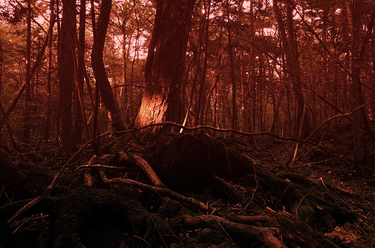 Aokigahara Jukai - Sea of Trees
Aokigahara Jukai - Sea of Trees Aokigahara is also popular with those who aim to enter the forest with no intention of ever returning. The density of the trees, and the relative lack of wildlife, gives the forest an eerily quiet yet peaceful presence. Unfortunately, those walking amongst the trees in the serenity more often than not have the peace shattered as they stumble across a body.
Aokigahara is also known as 'The Suicide Forest'.
Suicides
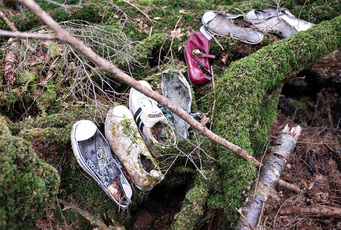 Shoes belonging to those passed
Shoes belonging to those passed The two main methods people choose to suicide are by drug overdose and hanging.
Every year a small army of police, volunteers and forest workers organise a body hunt in order to recover victims of suicide. This work is also carried out year round by volunteers who enter Aokigahara in order to recover bodies, as well as hoping to dissuade those people they find in the act.
But why is this forest so popular for suicide?
Some have tried to place the blame on several books. One book 'Nami No To' ends with two lovers suicide in Aokigahara. This book was published in the 1960's however suicide within the forest predates this time.
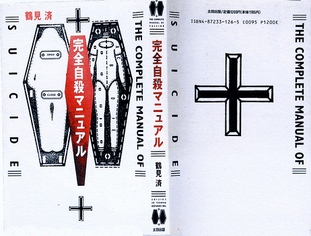 'The Complete Manual of Suicide'
'The Complete Manual of Suicide' This book was published in 1993 and has sold well over a million copies. This does put it in line with the rise in bodies recovered from the forest at that time, but nothing more substantial can link this book with the deaths (although the manual has been found in the possession of some people found within the forest.)
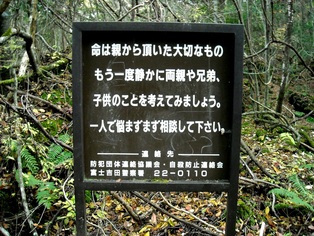 One of many suicide prevention signs
One of many suicide prevention signs It is not known how much of an impact these preventative measures have had on the suicide rate, although the best place to ask would be the three local villages that border the forest. These villages are responsible for the bodies that are recovered ,especially those that are unclaimed or unidentified. There are more than 200 bodies, unclaimed, that are held within these villages.
 Some of the streamers found in the forest
Some of the streamers found in the forest At other times notes are left in cars with explicit instructions that no one come looking for them.
Aokigahara is said to be haunted but not just by suicide spirits. Japanese history says Aokigahara may have been used for the practice of 'Ubasute'.
Ubasute is the practice of taking a elderly or infirm relative to a remote or desolate place and leaving them there to die via exposure, dehydration or starvation. Aokigahara is said to be haunted by the angry spirits of those left there to die.
(a note about the photo. Although the ribbons are sometimes placed so the bodies can be more easily found they are also left in case a person changes their mind and wants to leave again.)




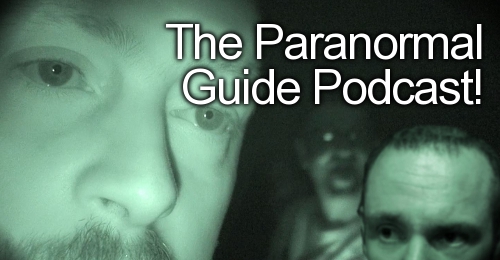
 RSS Feed
RSS Feed
